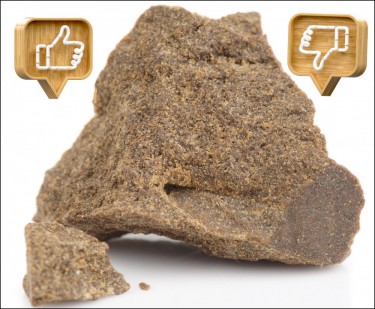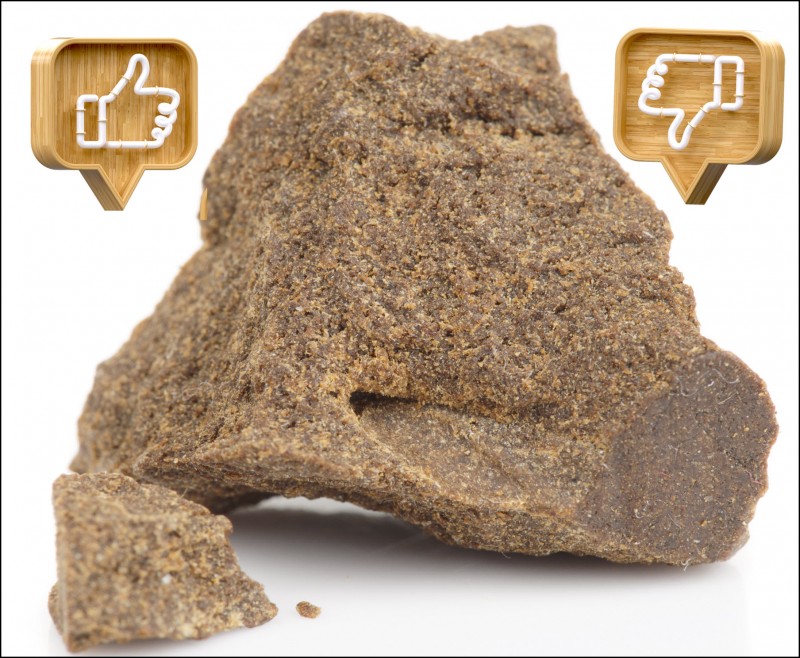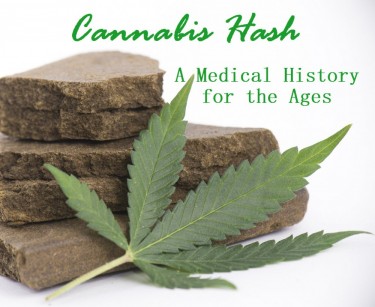A Quick And Easy Primer On Hash

Cannabis has seen a great wave of acceptance over the past couple of years and this has led to a majority of people seeking information about its basics, benefits, different product forms, methods of consumption, and so on. In this article, I'll be drilling down on one of the most popular and most sought-after canna product, Hash!
Hash has drawn considerable attention recently but the majority of cannabis enthusiasts are still not sure about what it is, how it is produced, the best ways to use it, etc. Read on to find out all these and lots more!
What is Hash?
Hash is also known as hashish and it is a concentrated form of cannabis resin. it can also be characterized as the waxy form of kief. Hash is sourced from the trichomes of female cannabis plants and these have to be separated from the cannabis plant to produce the desired hash. They naturally exist a sticky coating on the cannabis buds. Hash can be smoked directly or used to make butter or oil suitable for cooking. It can also be used to make other types of cannabis concentrates.
Hash is a very potent product from the cannabis plant which has a high level of THC. It contains a good number of cannabinoids with a THC potency ranging from 20% to 70%. The normal range of THC potency for cannabis buds is between 25% to 30%. The implication of this is that one gets high faster with hash as opposed to a normal marijuana joint. Hash is quite different from the standard weed in many respects. In terms of preparation, flavor, and potency some significant differences exist between weed and hash.
When smoked, hash quickly takes effect and has a longer duration of action. The high experienced can last from 45 minutes to an hour. When infused into edibles, they take longer to act and this is best used by medicinal users. Hash can be enjoyed with a vaporizer, by adding it to a joint, or by using glassware.
Hash accounts for a big part of the cannabis industry market in the US. It makes up 6% of total sales of cannabis products in cannabis markets in the US. An increase in its popularity has seen more cannabis users in the US go into the use of hash as opposed to conventional weed. With a high percentage of cannabinoids, flavonoids, and terpenes present, hash is a very attractive product in the cannabis market.
Alongside other concentrates such as kief, BHO, and rosin, hash requires special types of preparation. This gives rise to different types of production methods for hash.
Types of hash production methods
Dry-sifting
This type of production of hash came into being in the 1980s after the first set of hash in the 1960s. In the 1960s, the hash was folded into brick and pressed hard. It is the product of heat and pressure. This is the type of hash used in common countries and cultures such as Afghan, Nepal, and Morocco. The dry sift hash is produced by using a master sifter to separate the hash from the female cannabis plant. The extraction is completely mechanical and doesn’t require the use of any solvent for the extraction.
This method of production highly prioritizes quality over quantity. The process of sifting to remove the trichomes and get the final products affects the quantity of the final product. However, it also ensures that the final product is of good quality with a high level of THC potency. This method of production gives rise to a final product with about 40% to 60% THC potency.
Ice water
This is another type of mechanical separation method. The plant material to be used is placed in a bag with 40% ice. At 109 degrees Fahrenheit, dry ice makes the plant material brittle and trichomes begin to break away from stalks. The bag is agitated to facilitate the separation and the trichomes break off into the collecting vessel below. The bags used for this method are filtration bags to aid the collection of the separated material.
This method is very efficient and effective as the trichomes separate more easily. It gives rise to a good yield of the final product. Likewise, the product is of good quality despite not using a solvent for the extraction. This method of production gives rise to a final product that can have THC potency rising to 80%.
Apart from these two methods, hash can also be derived from other kief but this is a far less common method of production.
Tips when using hash
Be careful
The difference in THC potency between weed and hash has been stated earlier and it is a reason why caution can't be overemphasized. With a little amount of hash, the results gotten with higher amounts of weed are achieved. Therefore, it is best to start low and slow especially for those that are new to hash.
Avoid illegal products
The nature of hash and the illegal cannabis markets in the US is a cause for concern. Because of the ignorance of most users, most products sold as hash on the illegal cannabis scene are not hash. The majority of these products are full of illegal adulterants and contaminants that pose a high health risk to users. Where hash is concerned, it is best to avoid these black markets to avoid purchasing products that are harmful. Patronizing quality dispensaries that are licensed and offer quality assurances for their products is highly recommended.
Talk to your budtender
When it comes to cannabis and its products, quality information is key. Before trying hashish, it is best to consult your budtender to inform you about what you're purchasing. This saves you the trouble of making the mistakes that many make with hashish. It also ensures that the experience is well guided towards the best results.
Bottom line
Hash is a very useful cannabis product with enormous potential. Its high THC potency makes it a magnet for many recreational users. The need for caution can't be stressed enough, especially if it's your first time. For newbies, it's advisable you start small and slowly work your way up.
HASH AND MORE, READ THESE..
A MEDICAL HISTORY OF HASH AND HOW TO USE IT, READ THIS.
OR..
WHAT IS THE DIFFERENCE BETWEEN WEED AND HASH? CLICK HERE!








